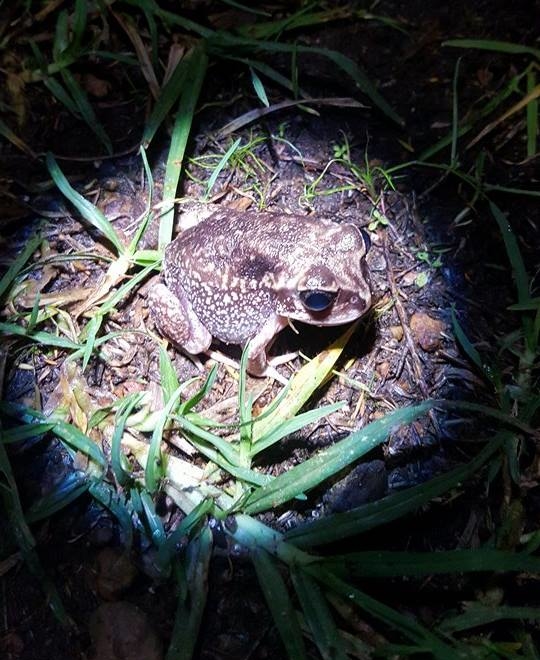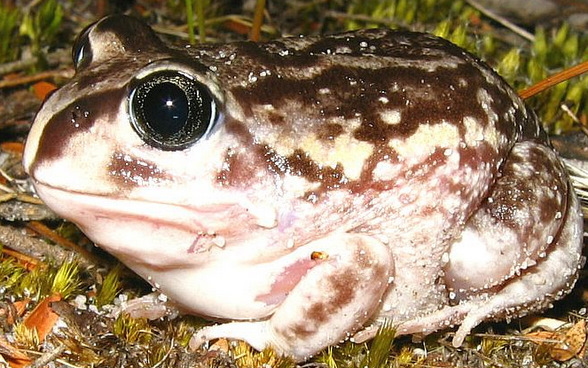Distinctive feature
Irregular patches of dull yellow or grey.
Size
Males 3.3 – 6.6 cm, females 4.6 – 6.3 cm.
Behaviour
Call
A long and rising slow moan. Males usually call from the breeding burrow.
Listen to the Moaning Frog call © Dale Roberts
Diet
Mostly invertebrates
Movement
Travel large distance to breeding sites and are often seen on roads following autumn rain
Breeding
Clutches of 80 – 500 eggs are laid in a burrow dug at an angle to the horizontal land surface. Larvae hatch and remain in the foamy egg mass until the burrow is flooded. Tadpoles feed for several months. Metamorphosis is usually in September or October.
Field Guide
Improve your identification skills. Download your Moaning Frog field guide here!





